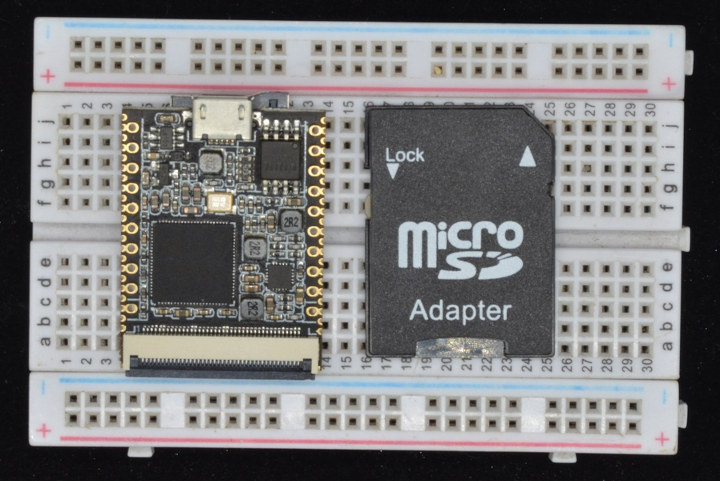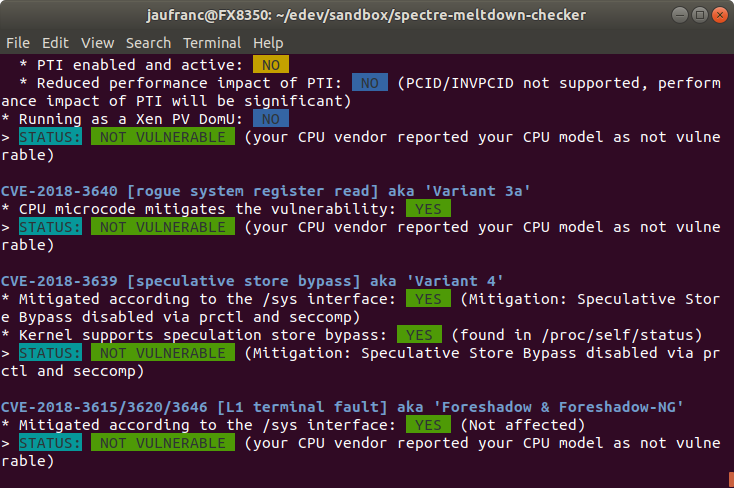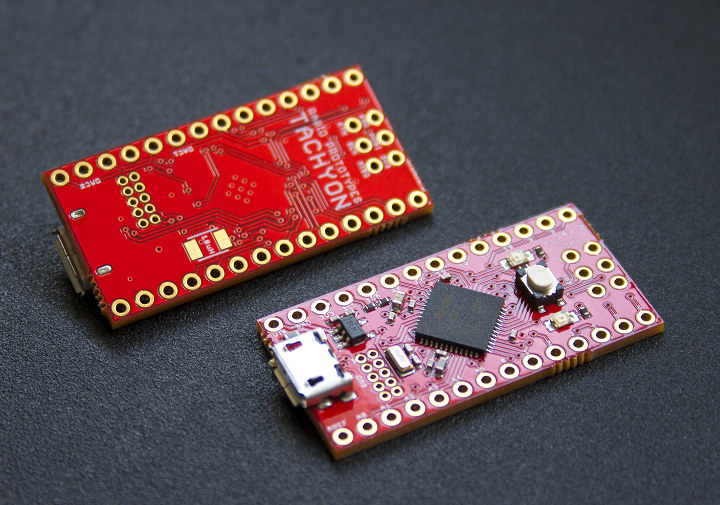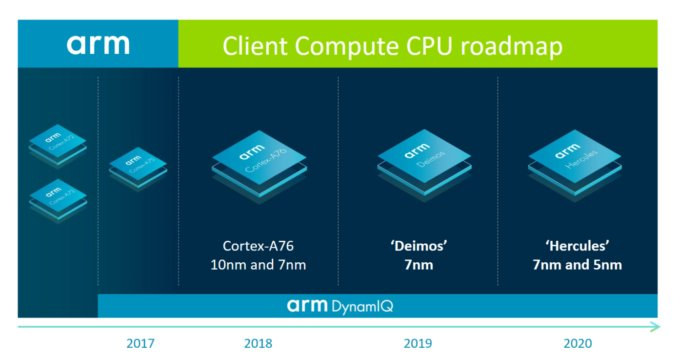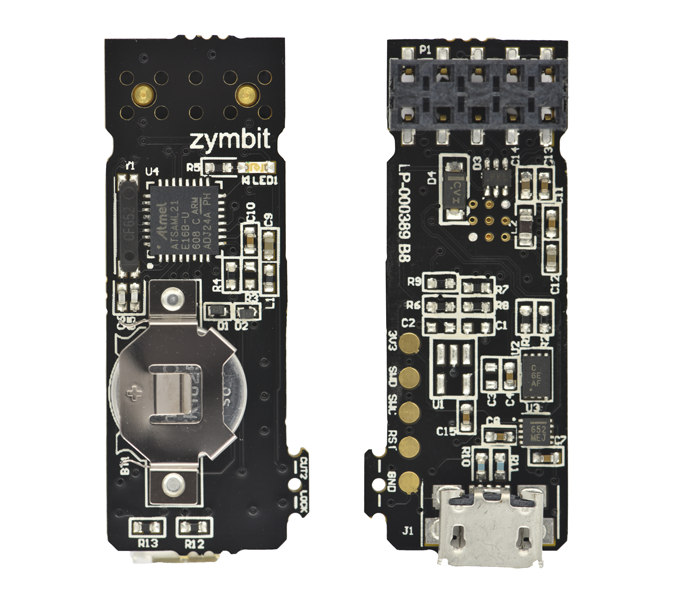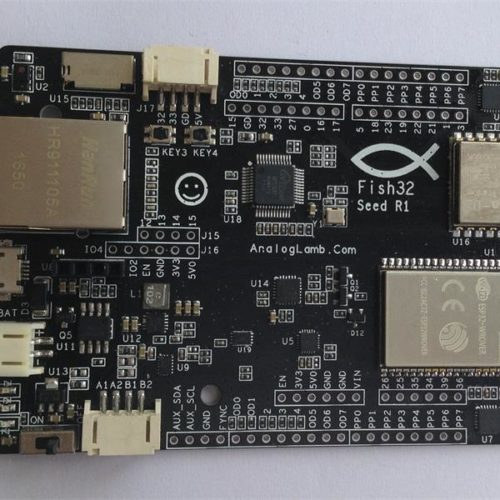Before Allwinner launched their popular A10 Cortex A8 processor earlier this decade, the company had Allwinner F-series ARM9 processors found in E-ink readers, vehicle multimedia systems, audio products and so on. I would not expect a new board based on of those processors in 2018, but LicheePi Nano looks to be exactly that with an Allwinner F1C100s processor, a form factor roughly the size of an SD card, and support for RGB LED displays. LicheePi Nano board specifications: SoC- Allwinner F1C100s ARM926EJS processor clocked at up to 900MHz System Memory – 32MB DDR integrated into SoC Storage – Micro SD card, and optional 8M SPI flash (unpopulated in the photo above) Display I/F – 40-pin RGB LCD FPC connector supporting 272×480, 480×800, 1024×600 and other resolutions resistive and capacitive displays Video Decoding – H.264 / MPEG up to 720p I/Os via 2.54mm pitch through holes and 1.27mmm pitch castellated holes SDIO […]
Check for Spectre, Meltdown, and L1 Terminal Fault Vulnerabilities with Spectre-meltdown-checker Script
Yesterday, we wrote a little bit about the new speculative execution vulnerability known as L1 Terminal Fault (L1TF) or Foreshadow, and a reader – MHSadri – pointed to an interesting script that checks for all three speculative execution vulnerabilities, and runs in Linux and BSD (FreeBSD, NetBSD, DragonFlyBSD) across multiple architectures: Intel x32, AMD64, Arm and ARM64. Other architectures will also work, but mitigation reporting may not be correct. So I tried it on my own machine, a computer running Ubuntu 18.04 on an AMD FX8350 processor. Installation is easy:
|
1 2 |
git clone https://github.com/speed47/spectre-meltdown-checker/ cd spectre-meltdown-checker |
The developer recommends to check the script manually first, just for security sake. You can have two way to run it: either directly inside your OS, or via docker which may be a better idea since it would not be able to mess with your system especially I had to run it with sudo to avoid permission issues. Here’s […]
Tachyon Arduino Zero Compatible Board Features Microchip SAMD51 Arm MCU @ 120 MHz (Crowdfunding)
Most Arm based Arduino compatible boards come with a Microchip SAMD21 Arm Cortex-M0+ MCU clocked at up to 48 MHz since this is the microcontroller found in the official Arduino Zero and MKRZero boards and comes with proper support in the Arduino IDE. But last year, Microchip introduced SAMD5x Arm Cortex-M4 microcontroller family which offers devices that are pin-to-pin compatible with SAMA2x microcontrollers but with better performance, and more memory and storage. So the guys at Rabid Prototypes decided to make Tachyon, a tiny Arduino Zero compatible board based on SAMD51 MCU for people wanting more oomph out of their Arduino board. Tachyon board specifications: MCU – Microchip ATSAMD51G18A Arm Cortex M4F @ 120 MHz with 256KB flash, 128 KB RAM I/Os Digital I/O pins – 14x w/ 12x PWM Analog input pins – 6x 12-bit ADC channels Analog output pins – 2x 10-bit DACs Operating voltage – 3.3V I/O […]
Arm Roadmap to 2020 Reveals Deimos and Hercules Processors for 5G Laptops
Arm has just published a roadmap for their Cortex-A processors until 2020, where we can see 7nm Deimos, and 7 to 5 nm Hercules succeeding Arm Cortex A76 core with “laptop class performance” announced last spring. For reference, an Arm Cortex A76 @ 3 GHz is said to outperform an Intel Core i5-7300U (15W TDP) processor at a lower power envelop. The two new Cortex-A cores will offer better better performance, will be launched in 2019 and 2020respectively, and as we’ll see below Arm expects those core to outperform Intel Core i5 processors. Current Arm laptop based on Qualcomm Snapdragon 835 have generally been disappointing in terms of performance, especially considering the prices those are sold for, but after a big jump on performance for Cortex A76 cores, Arm expects a 15% increase in compute performance per year. Hercules is expected to be around 2.5 times faster than current Arm […]
Zymkey is a Hardware Security Module for Raspberry Pi Board
Microchip ATECC508A CryptoAuthentication chip appears to be a popular way to add hardware encryption support to development boards, as we’ve seen previously with 96Boards’ Secure96 mezzanine or LoRa explorer kit, and even just earlier today with Analoglamb Fish32 Seed ESP32 education board. Another solution is from Zymbit which provides Zymkey security modules for Raspberry Pi based on the ATECC508A CryptoAuthentication chip in different form factor: either a USB stick, an I2C module, or for further integration into your own design, an SMT component. Zymkey enables multifactor device ID & authentication, data encryption & signing, key storage & generation, and physical tamper detection. It also features a secure element root of trust, a real-time clock, and a true random number generator (TRNG). The company provides a simple Python or C/C++ API to make it easier to add Zymkey support to any Linux application, and the secure module can be integrated with […]
Android 9 Go Edition Uses Less Storage, Boots Faster, and Improves Security
Android Go Edition was first launched with Android 8 (Oreo) in order to provide an operating systems and Google apps optimized for low-end hardware with less than 1GB RAM. Since then more than 200 Android Go smartphones have been introduced in over 120 countries for as low as $30. Follow the release of the “full” Android 9.0 Pie operating system last week, the company has now announced Android 9 Go Edition with several new features. Android 9 Go Edition brings the following improvements at the OS level: Up to 500MB extra storage – So as shown above you may have 5.5GB free instead of 5.0 GB in Android 8 in a phone with an 8GB flash. Faster device boot times Better security features like verified boot Dashboard for tracking and monitoring data consumption The company also made several improvements to Google Go apps with for example, Google Go being able […]
$50 Fish32 Seed “Education” ESP32 Board Comes with Plenty of I/Os, Sensors, and Connectivity Options
Sometimes I feel the word “Education” is sometimes thrown around for marketing purpose, and AnalogLamb Fish32 Seed board for “ESP32 Community Education Board” feels that way to me as so far, I could not see any tutorials or other teaching/ learning resources for the board. Having said that I can see why it could be potentially used for education: the sheer number of features, sensors, and connectivity options should allow students to learn to program my different components around ESP32. It’s just at this stage it may not be such an easy platform to learn on. Fish32 Seed board specifications: Supported ESP32 Modules – ESP32-WROVER, ALB32-WROVER, ESP32-WROOM-32 Connectivity 802.11 b/g/n WiFi and Bluetooth 4.2 via ESP32 10/100M Ethernet (RJ45) via WIZnet W5500 chip with support for up to 8 independent sockets LoRa via SX1278 chip (433 MHz) Sensors NXP MPU-9250 with 3-axis MEMS gyroscope, 3-axis MEMS accelerometer, 3-axis MEMS magnetometer […]
More Speculative Execution Exploits – Meet Foreshadow / L1 Terminal Fault
Speculative execution is a feature to speed up performance of recent processors which works by predicting and loading likely future instructions ahead of time. The features became somewhat famous a few months ago with Meltdown and Spectre vulnerabilities exploiting the features. The exploits impact Intel, AMD, Arm, and other processors to various degrees, and since the feature is built-in into the hardware, there’s no easy fix, and instead operating systems vendors, cloud service providers, hosting services and other stakeholders implemented mitigations. While a lot of progress has been made, work is still going on with the just released Linux 4.18 still getting some code changes related to the exploits. But just as solutions were found for Spectre and Meltdown, a new speculative execution exploitation has raised its ugly head: L1 Terminal Fault also known as Foreshadow. The new flaw appears to be just as serious, and a dedicated website has […]


